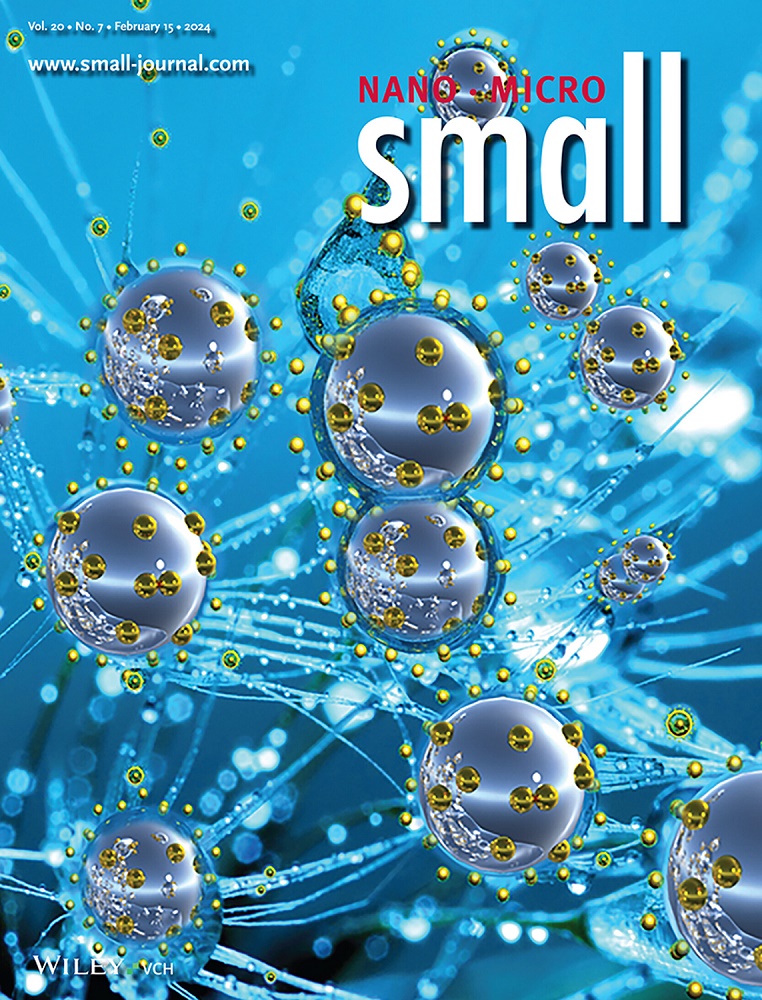0D杂化溴化锰中自捕获激子和Mn2+能量转移的可调谐宽带发射
IF 13
2区 材料科学
Q1 CHEMISTRY, MULTIDISCIPLINARY
引用次数: 0
摘要
合成了一种新型的基于溴甲基三甲基铵(TMBM)阳离子的有机-无机杂化溴化锰(TMBM)2MnBr4,并对其进行了结构表征。该材料经历了两次温度诱导的相变,并在低温下表现出强烈的宽带绿色光致发光。详细的结构、光谱和热力学分析表明,发射行为是由激子动力学和阳离子有序之间的相互作用所控制的。自捕获激子(STE)形成和向Mn2 +中心的能量转移之间的竞争使得发射可调,而Mn─Br键长在晶体学上不同的四面体上的变化可调节晶体场强和发射能量。这些对低维卤化锰结构-性能关系的见解为设计高效、可调谐的发光材料和多功能磁光器件提供了有希望的途径。本文章由计算机程序翻译,如有差异,请以英文原文为准。
Tunable Broadband Emission via Self‐Trapped Excitons and Mn2+ Energy Transfer in a 0D Hybrid Manganese Bromide
A novel 0D organic–inorganic hybrid manganese bromide, (TMBM)2 MnBr4 , based on bromomethyltrimethylammonium (TMBM) cations and isolated [MnBr4 ]2 ⁻ tetrahedra, is synthesized and structurally characterized. The material undergoes two temperature‐induced phase transitions and exhibits intense broadband green photoluminescence at low temperatures. Detailed structural, spectroscopic, and thermodynamic analyses reveal that the emission behavior is governed by the interplay between exciton dynamics and cation ordering. The competition between self‐trapped exciton (STE) formation and energy transfer to Mn2 ⁺ centers enables tunable emission, while variations in Mn─Br bond lengths across crystallographically distinct tetrahedra modulate crystal field strength and emission energy. These insights into structure–property relationships in low‐dimensional manganese halides offer promising avenues for the design of efficient, tunable luminescent materials and multifunctional magneto‐optical devices.
求助全文
通过发布文献求助,成功后即可免费获取论文全文。
去求助
来源期刊

Small
工程技术-材料科学:综合
CiteScore
17.70
自引率
3.80%
发文量
1830
审稿时长
2.1 months
期刊介绍:
Small serves as an exceptional platform for both experimental and theoretical studies in fundamental and applied interdisciplinary research at the nano- and microscale. The journal offers a compelling mix of peer-reviewed Research Articles, Reviews, Perspectives, and Comments.
With a remarkable 2022 Journal Impact Factor of 13.3 (Journal Citation Reports from Clarivate Analytics, 2023), Small remains among the top multidisciplinary journals, covering a wide range of topics at the interface of materials science, chemistry, physics, engineering, medicine, and biology.
Small's readership includes biochemists, biologists, biomedical scientists, chemists, engineers, information technologists, materials scientists, physicists, and theoreticians alike.
 求助内容:
求助内容: 应助结果提醒方式:
应助结果提醒方式:


